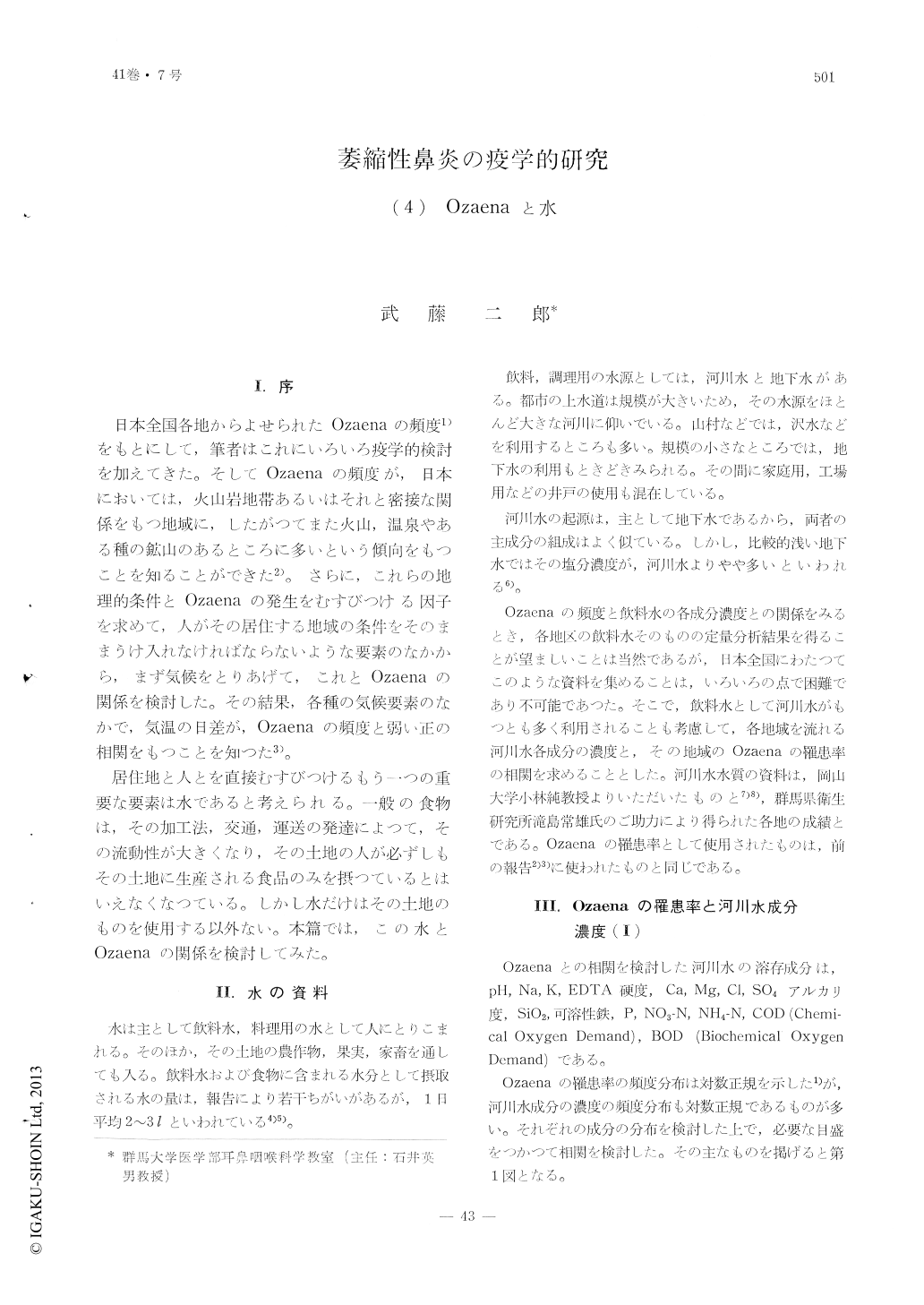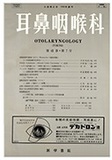Japanese
English
- 有料閲覧
- Abstract 文献概要
- 1ページ目 Look Inside
Ⅰ.序
日本全国各地からよせられたOzaenaの頻度1)をもとにして,筆者はこれにいろいろ疫学的検討を加えてきた。そしてOzaenaの頻度が,日本においては,火山岩地帯あるいはそれと密接な関係をもつ地域に,したがつてまた火山,温泉やある種の鉱山のあるところに多いという傾向をもつことを知ることができた2)。さらに,これらの地理的条件とOzaenaの発生をむすびつける因子を求めて,人がその居住する地域の条件位そのままうけ入れなければならないような要素のなかから,まず気候をとりあげて,これとOzaenaの関係を検討した。その結果,各種の気候要素のなかで,気温の日差が,Ozaenaの頻度と弱い正の相関をもつことを知つた3)。
居住地と人とを直接むすびつけるもう一つの重要な要素は水であると考えられる。一般の食物は,その加工法,交通,運送の発達によつて,その流動性が大きくなり,その土地の人が必ずしもその上地に生産される食品のみを摂つているとはいえなくなつている。しかし水だけはその土地のものを使用する以外ない。本篇では,この水とOzaenaの関係を検討してみた。
The correlation between the incidence of ozena and the character of the water with which the region may he supplied is studied. In water analysis particular attention was paid to its contents such as pH value, sodium, potassium, calcium, magnesium, chlorine, sulphate and other soluble ions, EDTA hardness, alkalinity, total phosphorus, nitrate nitrogen, ammonia nitrogen, chemical oxygen demand and biochemical oxygen demand.
Among these water contents, sulphate ion concentration appeared to show a significant correlation to the incidence of ozena (r=+0.47, p<0.01). Analysis of the river water of the region showed a striking resemblance of the analysis already made of the drinking water.
The main problem with which this sort of ecological study may be confronted is to determine whether the correlation that may be found between the sulphate ion concentration and the incidence of ozena is likely the cause and effect, or whether it merely reflects some other factors. However, much more work will be necessary before this question could be answered properly.

Copyright © 1969, Igaku-Shoin Ltd. All rights reserved.


